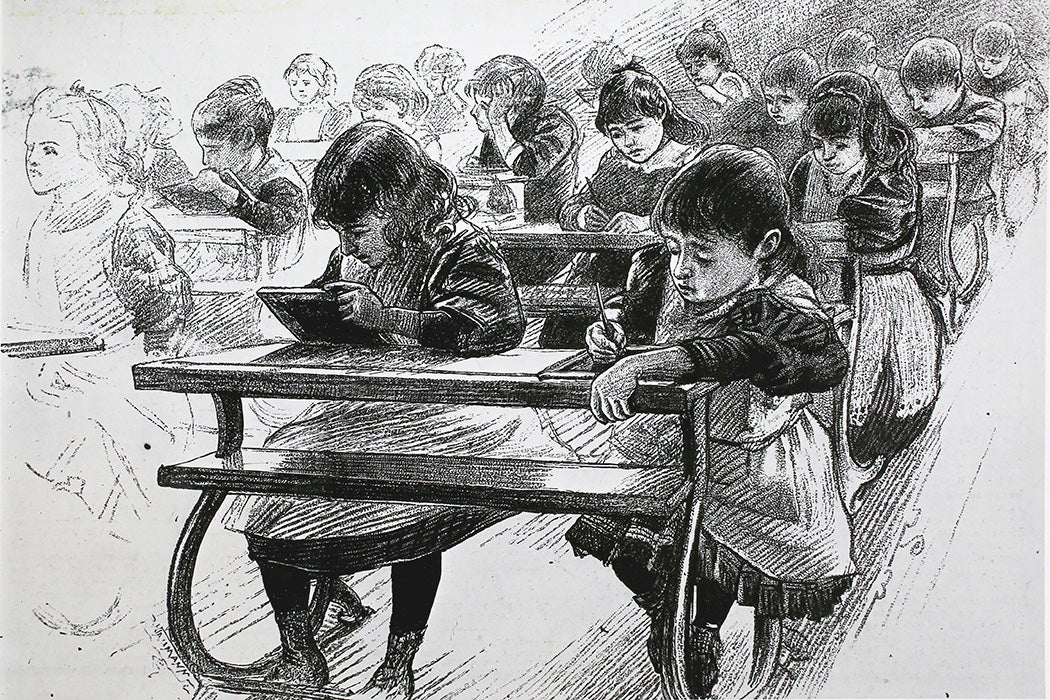November 29, 2020, marks the 150th anniversary of the Elementary Education Act of 1870, which required children in England to attend school. As historian Sascha Auerbach explains, this move led to some pitched battles between authorities and working-class parents.
While other scholars have demonstrated that many working-class English people supported elementary education, that didn’t mean that all families were willing or able to send their kids to school consistently. Auerbach writes that lawmakers and education officials assumed from the start that they would need to use coercive methods to achieve universal education. After the passage of the 1870 act, London alone hired hundreds of school attendance officers, generally known as “Visitors.”
In September 1872, a Visitor named Mr. Hill arrived at the Manchester home of a student who had missed classes. He was greeted by the boy’s older brother, Thomas, who “obstructed Hill and kicked him, and assisted his father to escape,” according to court records. This, Auerbach writes, was an extreme case. But resistance was common. The London School Board legally prosecuted more than 10,000 violations of attendance bylaws every year.
And that represented just a fraction of the conflicts over school attendance between officials and working-class families, many of which were resolved informally during officers’ visits. Many parents also quietly obtained fake medical excuses, or birth certificates that showed children being older than they were.
“Although it may seem to contemporary eyes that any mother or father who denied their child the benefits of education was doing them a great disservice, working-class Victorian householders clearly felt differently,” Auerbach writes. “For them, labor, more so than education, determined the survival of the household and the fate of the family.”
Sometimes, instead of evading the law, parents made this argument explicitly. They insisted that children were “needed at home” for childcare and domestic work, or that the family needed them to earn wages.
An account in the Daily Mail described a girl “of not more than ten” arriving at a truancy enforcement meeting with an infant in tow to represent her mother before the officials. The girl explained that she was responsible for taking the infant to the hospital each week.
“She’s consumptive, like her father died of,” the girl tells the officials, explaining that her mother couldn’t do it herself. “She’s out charing, and it’s all we have.”
Auerbach writes that it’s likely that this account was dramatized or even invented. But appearing in a working-class paper, it reflected its audience’s experience of families’ impossible choices.
Weekly Newsletter
And it seems that officials also understood these difficulties. The only legally permissible excuse for children to miss school was illness, but by the 1890s, authorities often allowed parents to keep their kids from school for other reasons. In particular, older girls were likely to be permitted to stay home to attend to domestic responsibilities, a duty that fit with Victorian middle-class norms.
Today, these same competing demands keep some children out of school, both in developing countries and—particularly during the current pandemic—developed ones like the United States, too.
Support JSTOR Daily! Join our new membership program on Patreon today.







